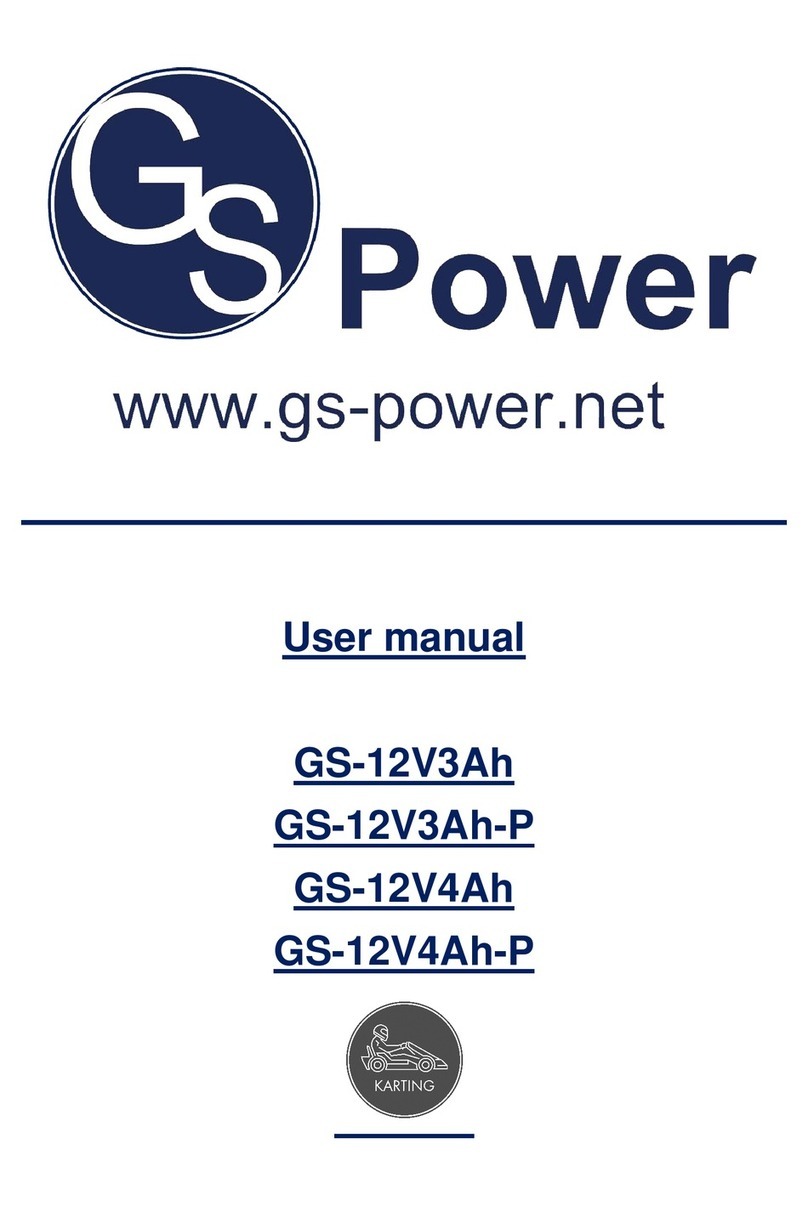
1. Safety guidelines and measures
1.1. General
• Do not short-circuit the LiFePO4 battery.
• Do not disassemble, crush, puncture, open or cut the LiFePO4
battery.
• Do not expose the LiFePO4 battery to heat or fire. Avoid exposure to
direct sunlight.
• Do not remove the LiFePO4 battery from the original packaging until it
is required for use.
• In the event of an electrolyte leak, do not allow the liquid to come into
contact with the skin or eyes. In case of contact, wash the affected
area with water and seek medical attention.
Always use a class 2 charger specifically designed for use with a
LiFePO4 battery.
• Pay attention to the plus (+) and minus (-) markings on the LiFePO4
battery and on the unit and ensure correct use. Connect the positive
cable first, and then connect the negative cable.
• Do not mix batteries of different manufacturers, capacities, sizes or
types.
• Keep the LiFePO4 battery clean and dry.
• Second batteries must be charged before use. Always use the correct
charger and read this manual for correct charging instructions.
• Remove the battery from the vehicle/vessel if it is to be stored for a
long period of time and store it in a dry and frost-free place after
charging.
• Switch off all consumers connected to the battery after use so that the
battery is not permanently discharged.
• Do not leave the LiFePO4 battery charging on the charger for weeks.
• After prolonged storage, the battery must be charged with a class 2
charger.
• Keep the original product documentation or have the link to our
website (www.GS-Power.net) ready.
• You can access the website via the QR code on the battery or the
packaging. There you have the option of downloading these operating
instructions.




























